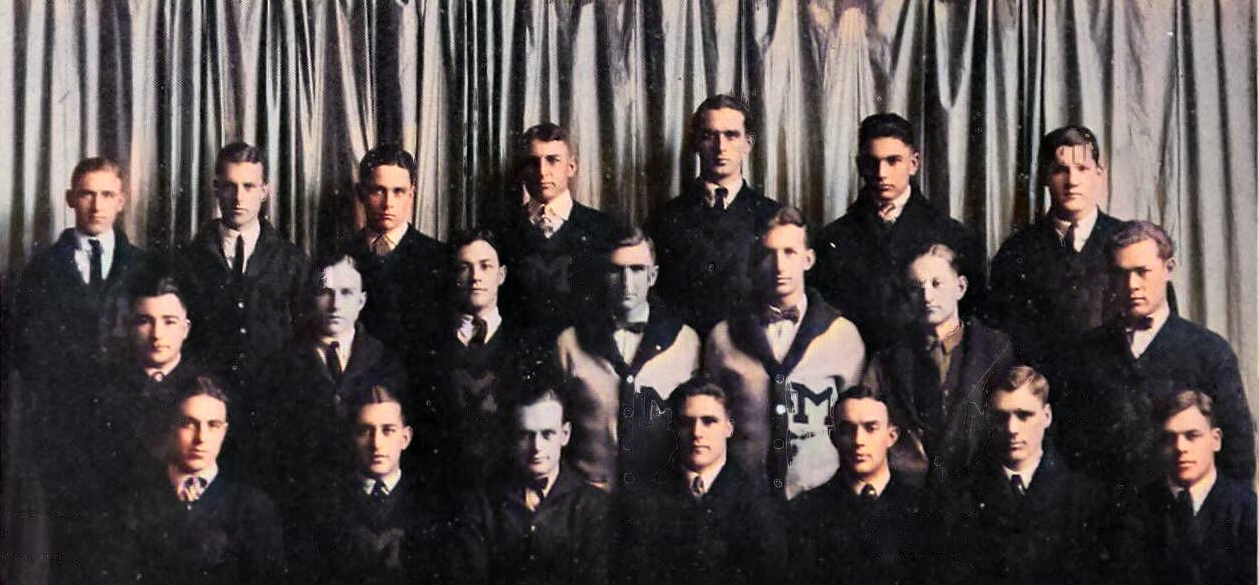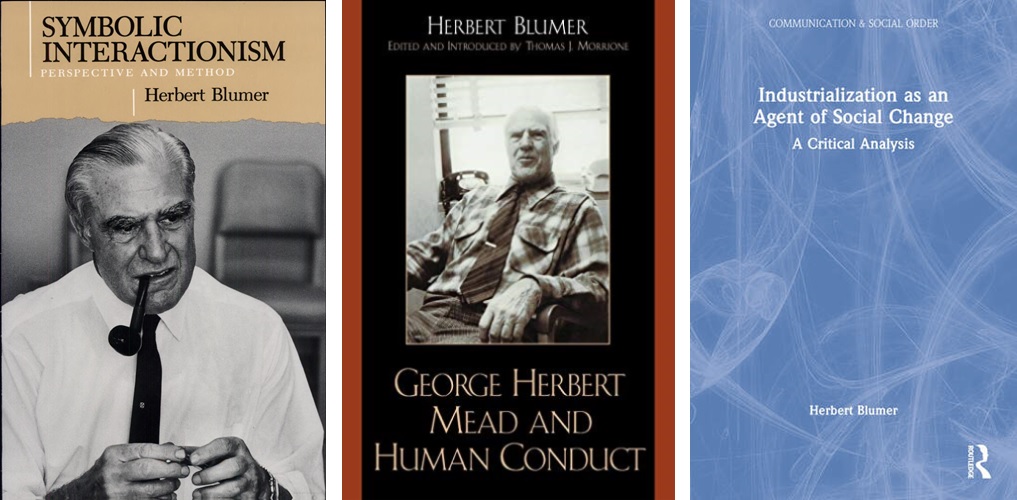Herbert Blumer
[1900-1987]
Herbert Blumer was a writer, anthropologist, and ethnologist from the United States. He was a pioneer of American anthropology and is best known for his studies of kinship and the evolution of culture.
How has Blumer's career evolved ? Learn about him and his life in the following article.
I. Herbert Blumer biography
Blumer created, named, and advanced the "Symbolic Interactionist" perspective as the leading interpreter and heir to the George Herbert Mead tradition. Herbert Blumer was the epitome of graciousness in his ecumenical approach to the field of sociology, despite his staunch adherence to and defense of this position.

1. Who is Herbert Blumer?
Herbert Blumer was raised in St. Louis, Missouri, where he was born. He left high school to help his family after a fire destroyed his father's place of business. He completed independent study for two years before passing the entrance exam required for admission to the University of Missouri. While he would briefly pursue other careers, this marked the start of a lifetime dedicated to his main passion, scholarship. He attended the University of Missouri for his undergraduate studies (1921) and graduate studies (1922), and stayed there for another three years as an instructor.
Blumer left Missouri in 1925 to enroll in the University of Chicago's doctoral program. He would receive his doctorate there (1928) and work as a professor for the following 24 years. However, Blumer played professional football for the Chicago Cardinals, the team that later relocated to St. Louis and is now the current franchise in the National Football League, to pay his way through graduate school at Chicago (and for two more years afterward) and supplement his meager income. Herbert Blumer was recognized as an All-American Guard in 1928.
2. Herbert Blumer early career
For a dozen years in Chicago, Blumer was the American Journal of Sociology's editor (1940-52). He was known for being a skilled labor arbitrator as well and served as Chairman of the Board of Arbitration for the United SteelWorkers of America and the United States Steel Corporation from 1945 to 1947. Throughout the Second World War, he additionally worked as the Chief Liaison Officer of the State Department's Office of War Information.
He agreed to take the position of department head for sociology and social institutions at the University of California, Berkeley in 1952. Herbert Blumer would leave one of his most significant contributions to the field in this capacity. This was a time of expansion, rising budgets, and broad discretion and power in the chair's position. Blumer made use of his position to create one of the most outstanding and accomplished faculties of sociology ever assembled. In that first decade, Herbert Blumer presided over the Department and played a key role in orchestrating the convergence of a faculty that not only included some of the most important scholars in their respective fields among its members, but involved a range of different and competing perspectives. This was despite his strong commitment to his own version of what sociology ought to do, be, or become. The Berkeley Department had a strong reputation as one of the top sociology departments in the world by the middle of the 1960s.
3. Herbert Blumer Contribution
Herbert Blumer contributed significantly to the symbolic interactionist school of though. He established the foundation for subsequent researchers to build on the aforementioned school of thought, who both praised and constructively criticized his work as a pioneer in the field. Blumer believed that the nature of the social world is systematically an interpretive process that all humans engage in, drawing inspiration for his ontology from Mead. Though I believe Blumer's contributions to the field of social science and their role in qualitative research were significant, they were also seriously flawed.
II. Herbert Blumer on Symbolic Interactionism
1. What is Symbolic Interaction Theory?
We are thought to enter this world as blank slates, and through social interactions with others, our identities grow. The best way to understand human behavior, according to him, is to realize that it depends on how symbols are interpreted, he said.
The social interactionist held that each person shapes their own identity and that everyone is unique. He added that imitation, social interaction, tradition, habit, and experience all play a role in how people learn to behave.

2. How Does Blumer Explain Symbolic Interactionism?
According to Blumer, who was a proponent of symbolic interaction, social interaction consists of three parts. He asserted that people's initial behaviors have an impact on other people and do not occur in a vacuum. Second, the significance of those deeds or symbols can change depending on who is receiving them and the meaning they are intended for. The final source of these meanings is social actors and how they are influenced by the society in which they live. The interactionist also held that communication is a two-way process that requires both the sender and the receiver to be aware of others (Mead).
Herbert Blumer also held the view that there are various systems in society, and that these systems frequently clash with one another, resulting in conflict. For instance, being on time for a business meeting is probably crucial, but if there is an emergency at home, your family's needs will take precedence. Conflict would result from this because employees who do not comprehend it risk losing their jobs.
3. What Are Symbolic Interactionism's Three Fundamental Principles According to Herbert Blumer?
The following are the first three fundamental tenets of symbolic interactionism:
- Individuals' behavior within their social groups, rather than the characteristics of individuals or mobs, determines collective behavior.
- The person is viewed independently of any biological or psychological theories. The person is viewed as an active participant in the sociocultural process rather than as either a rational or irrational being.
- Social action serves as a reaction. It can be expressed through words, actions, or simply by what someone does. It goes beyond simply responding to the thing. Before taking any action, you must also consider what it means and how you interpret that meaning.
4. What is Symbolic Interactionism Theory in Sociology
Symbolic interaction can be defined as the study of meanings in human behavior. The idea is that humans interpret their environment before responding to it, rather than just acting upon it. Because it can be used to explain why people behave in particular ways, this theory is useful. Additionally, it demonstrates how environmental factors affect human behavior and how environmental factors can affect human behavior.
The theory of symbolic interaction examines both verbal and nonverbal cues, including body language (e.g., a person nodding their head, crossing their arms).
Herbert Blumer was known for his work as an interactionist. He made significant contributions to our understanding of human behavior and society through this theory and elevated it to the forefront of sociological research.
Its central tenet is that people discover their roles as a result of their interactions with other people and the society in which they live. One thing to keep in mind about this theory is that while it views actors' actions as subjective and dependent on interpretation, it also views social actions as reactions or responses to signs.
III. Herbert Blumer Death & Legacy
1. Where was Herbert Blumer buried?
On April 13, 1987, Herbert Blumer, Professor Emeritus at Berkeley and a dominant figure in the growth and development of American Sociology for many decades, passed away after a protracted illness. He was 87 years old.
2. Herbert Blumer Legacy
The development of twentieth-century sociology has been significantly influenced by Herbert Blumer's work. At a time when Pragmatism was in trouble, he maintained an interest in George Mead. There is no doubt that Herbert Blumer's tenacious advocacy helped propel Mead's work to the forefront of contemporary social thought, even though it is unlikely that it would have been overlooked. Park established the collective behavior subfield, but Blumer was responsible for sustaining it in the face of structural-opposition.
Functionalism's Sociologists will need to be concerned with how people respond to challenging circumstances whether or not collective behavior remains a distinct field of study. Even though some of his positions on methodology have been debatable, some of them are likely to be accepted.It is challenging to argue against his insistence on direct observation of people in their natural environments and his claim that human agency must be taken into account in explanations of social processes.
IV. Herbert Blumer Books

1. Symbolic Interactionism: Perspective and Method
This is a collection of articles that discuss methodology in the field of sociology from the perspective of symbolic interactionism. It was written by the leading representative of the symbolic interactionism school and offers what might be considered the most authoritative defense of its viewpoint, outlining key tenets and outlining how they affect sociological research. According to Herbert Blumer, symbolic interactionism is based on three fundamental ideas: that people behave toward things based on the meanings those things hold for them; that those meanings come from social interactions with others; and that these meanings are handled and changed through an interpretive process.
2. George Herbert Mead and Human Conduct
Famous sociologist Herbert Blumer evaluates George Herbert Mead's place in the field of the study of human behavior in this posthumous volume. Blumer spent more than 50 years studying Mead's work and used his insights to advance the theoretical and methodological stance of symbolic interactionism, a term he would later coin. Blumer's goal was to investigate how social processes are embodied in and formed by social action, even though he primarily focused on the sociological and social psychological implications of Mead's pragmatism. Herbert Blumer emphasized the importance of establishing the empirical world of people's experiences as the foundation for scholarly knowledge about the human condition. He saw individual and collective social action as ongoing accomplishments achieved through symbolic interaction.
3. Industrialization as an Agent of Social Change: A Critical Analysis
Continuously producing large amounts of writing, Herbert Blumer left a sizable body of unpublished work behind him when he passed away in 1987. This volume, which was published after his passing, is further evidence of his insightful examination of complex social structures and skillful application of symbolic interactionist ideas. In his theory of industrialization and social change, Blumer emphasizes the processual nature of social life as well as the importance of the communicative interpretation of social contexts.
His theory includes three main points:
- Industrialization must be viewed in processual terms, and the process varies for different historical periods;
- The effects of industrialization depend on how people interpret their actions, and the industrial sector must be viewed in terms of power relations;
- Industrial societies contain inherent. In the context of current macro theory, such as resource dependence theory, world systems theory, and modernization theory, it situates Blumer's theory.
V. Herbert Blumer Quotes
Herbert Blumer makes a number of crucial points throughout his work, but five of the most important ones are as follows:
- He asserted that "all social action is purposeful behavior.". This quotation exemplifies how people behave with purpose and intention in order to accomplish particular objectives they have set for themselves.
- "We all belong to the same community and live our public lives together" This demonstrates the interdependence of people in order for societies to function. Humans are social creatures, and as such, we depend on one another to work as a team and complete the tasks that we all require.
- We must acknowledge that symbolic interaction and human behavior are just as "real" as physical reality. George Herbert believed in the social behavior of people. For instance, this quotation demonstrates how meaningful communication between people is facilitated by the use of signs. Speech, gestures, and actions are examples of symbols.
- We frequently don't realize what we mean until after we've said or done it. This quotation looks at how people don't even realize they're thinking or feeling something until they act on it. This demonstrates the depth to which people engage in a wide range of interactions with one another.
- "How individuals interpret their meanings through symbols shapes society and social interaction."
WHAT IS YOUR IQ?
This IQ Test will help you test your IQ accurately
Maybe you are interested
